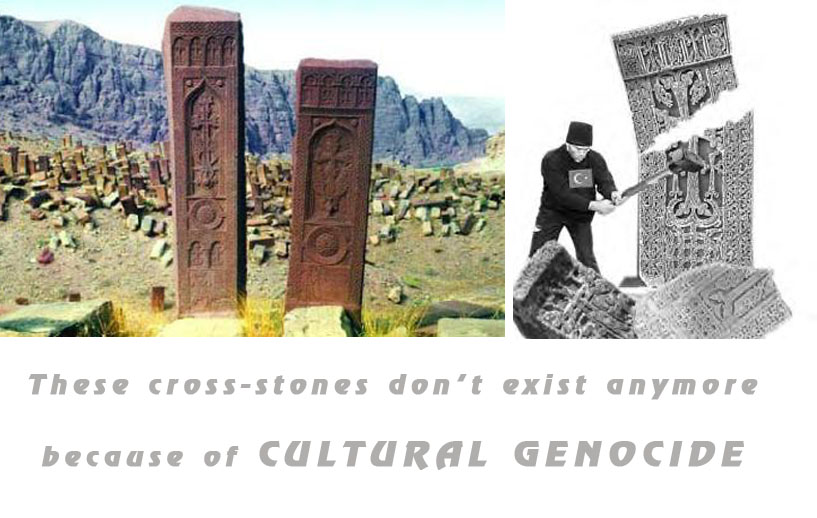Brief historical survey
Nakhijevan is situated in the area between the mountain range of Zangezur and the river Arax. It borders on the Republic of Armenia and the Islamic Republic of Iran. In 1931 Turkey exchanged some territory with Iran and acquired a common frontier with Nakhijevan.
Djugha,in the historical province of Yerndjak, was one of the famous settlements of Old Armenia, it continued to exist intermittently till 1848. This settlement which had acquired fame as a village in the early Middle Ages, grew into a town in the X-XII centuries, while in the XV-XVII centuries, it was an outstanding trade centre in Armenia.In the Middle Ages this densely populated, prosperous town was often subjected to invasions by foreign forces and was devastated, plundered and set on fire. It was in 1605 that Djugha finally lay in ruins and its population was compelled to migrate.Djugha was founded on an important cross-road of the well known trade and military transil routs of the Old World, through which, routes from the Far East passed on their way to the shores, of the Mediterranean. The historical town of Djugha was situated in Nakhidjevan, in the environs of the village of Djugha, districted of Djulfa, on the left bank of the Arax river, more that two kilometers in length from east to west and 400-500 metres in width from the Arax to the foot of the nearest mountains.
During the period between World War I and 1921, Nakhijevan was situated within the borders of the first Republic of Armenia.
Between 1919 and 1920, Turkey, under the auspices of its allies, perpetrated the slaughter of thousands of Nakhijevan Armenians. That carnage was actually the continuation of the Great Armenian Genocide, that had been committed in Turkey since 1915 for the purpose of removing the obstacle the Armenians posed to Turkey's unification with the Turkic tribes inhabiting what is present-day Azerbaijan. A long-pursued dream of Pan-Turkism, which is still a top priority for that country...
In compliance with an illegal agreement Soviet Russia and Turkey signed after World War I, on 16 March 1921 without the participation of the Armenian side, Nakhijevan was placed under the "auspices" of Azerbaijan as an autonomous territory; in fact, it was annexed to that country after having formed an inseparable part of Armenia over many centuries.
Throughout the 70 years of Soviet rule, the Azerbaijani authorities consistently implemented a policy of national discrimination against the indigenous Armenian populations of Nakhijevan and Nagorno Karabakh (Artsakh), another Armenian territory annexed to Azerbaijan in 1923 as a result of Lenin's and Stalin's policy of dividing nations to facilitate control and domination.
On the eve of the collapse of the Soviet Union, the Armenians of Nagorno Karabakh started a peaceful movement for self-determination. Azerbaijan attempted to suppress it, by mobilizing all its military and civilian forces. Alternately organizing and allowing pogroms against the Armenians living in the Azerbaijani cities of Baku, Sumgait and Gandzak, the Azerbaijani authorities intended to intimidate the Armenians into abandoning Karabakh and Nakhijevan. During the years of armed conflict between Nagorno Karabakh and Azerbaijan, Northern Karabakh (Northern Artsakh) and Nakhijevan were totally stripped of their indigenous Armenian populations. The last remaining 2,000 Armenians were deported from Nakhijevan in 1989. As a result, Nakhijevan's centuries-old Armenian cultural heritage was reduced to a state of captivity, and its planned annihilation loomed large.
by Argam Ayvazyan,
Dr. Armen Haghnazarian
 According to reports, a number of Armenian stone crosses (“khachkars”) have been purposefully destroyed in the Azerbaijan-held territory, Nakhichevan.
According to reports, a number of Armenian stone crosses (“khachkars”) have been purposefully destroyed in the Azerbaijan-held territory, Nakhichevan.



